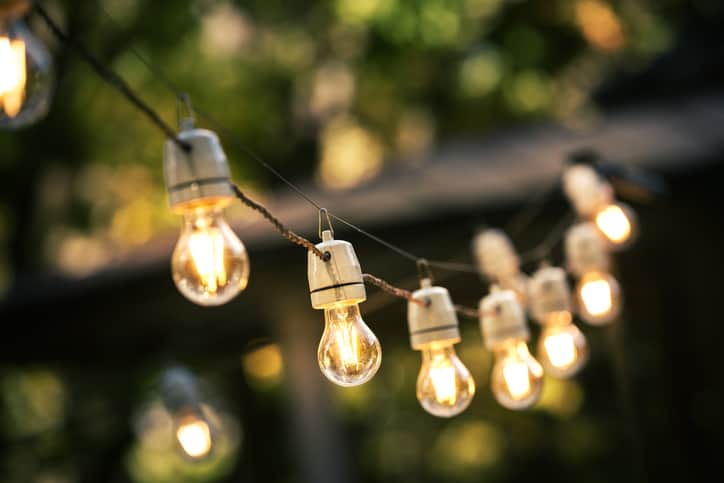
Barbecues, late night talks on the porch, and pool parties. Outdoor lighting can make all the difference in the aesthetics and ambience. If you want to ensure that your house is the place to be on the block this summer, here are some things to know when considering landscape lighting for your home.
Determine Your Lighting Goals
It is helpful to find examples that you like. Drive around your neighborhood or pay attention to other’s backyard parties. Photos rarely do justice do landscape lighting so get out and look for ideas. Are you wanting to set a certain mood and accentuate the beauty of your backyard for when guests come over? Maybe you want to deter intruders and provide more security via illumination. Did you just complete that stone walkway and now need lights to mark the boundaries? Or you simply want to utilize the energy savings of solar lighting. Once you figure out what you want, write down your goals or make an idea board. If you have multiple goals, put them on a separate piece of paper. Sketch each region and map out areas that you want illuminated. Mark where fixtures might go and transformer locations.
Whatever your goals, decide on budget and effort. If your project is to overhaul your entire property, it would be best to hire a professional lighting designer. For high voltage lights that are typically used for driveways and decks, a qualified technician must install those. Lower voltage, 12-15 volts, are used for accent lights, path lights, and small floodlights. They can be installed by anyone, use less energy, and are smaller. The least expensive and worrisome of lighting is solar. It is the easiest to install and relies on the sun and inbuilt photovoltaic devices to work so there is no cost to operate, just the initial price in purchasing.
Decide On Fixtures
Before deciding what fixtures are best, it is easy to simulate the effects of many lighting fixtures with a strong flashlight. For uplighting, hold the flashlight below the object or surface. For downlighting, hold it above. To simulate a path light, hold a reflector, (piece of white cardboard) over the flashlight and place it beside the path. For trees, be sure and bathe the trunk in light when aiming ground lights up. If you only light the foliage, you may be inadvertently sending up a sort of bat signal. For gardens, make sure fixtures are no closer than 20 feet apart. You want to create “pools of light”. For the front of your home, aim lights at the corners of the house or at architectural details with softer lights in between.
No matter what fixtures you choose, make sure you keep them free of leaves and debris. If you are using electrical lights, change burned out bulbs immediately so that others do not overload.


